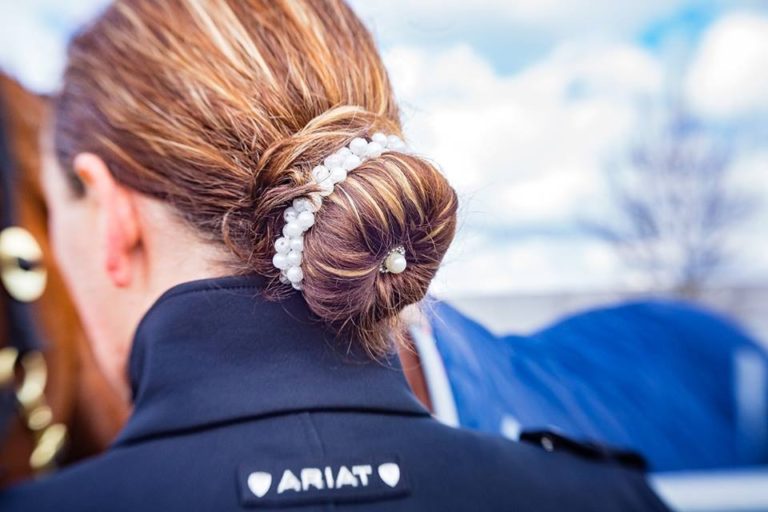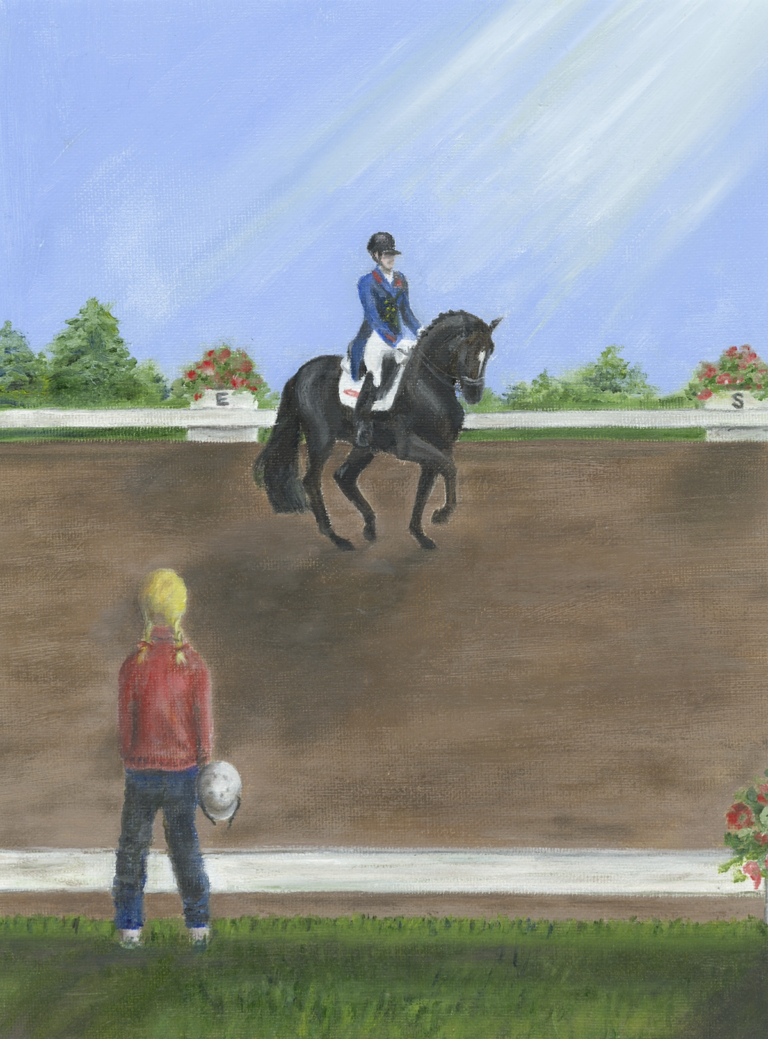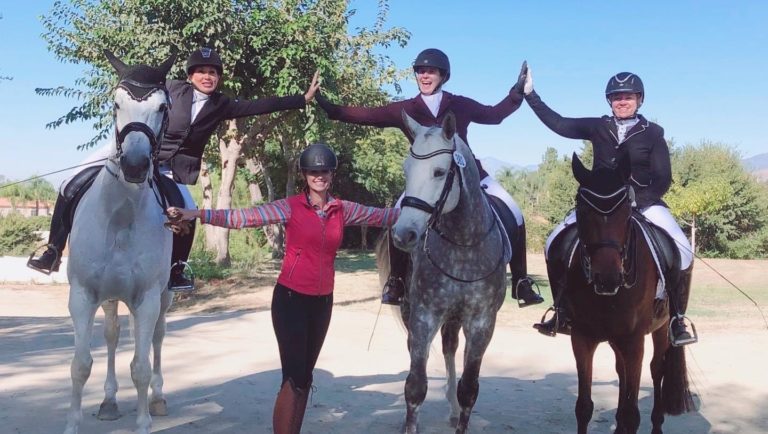
As riders, when we think of symmetry, we think of one leg seeming longer than the other–in spite of even stirrup leathers, or a shoulder that tends to drop below the other. We also think of slouching forward, leaning back or riding with one hip falling “in” or “out”. These are all great examples of the way our body balances itself in the sagital and frontal planes.
Movement in the sagital plane means forward and back, such as your shoulders slouching or your knees creeping forward. Movement in the frontal plan would be side to side, such as your left shoulder dropping, or spine curving left.
Since the goal in riding is to maintain symmetry in motion, body movement outside a nicely vertically stacked symmetrical position usually results in compensating patterns. For example, it’s quite common to see shoulders that lean back accompanied by lower legs that creep forward. Your body is trying to distribute your mass in equal portions across the center of gravity. When that center is under your seatbones in the middle of the saddle, your shoulders and heels are in alignment, you are straight. If you shift the distribution of your weight from the center by leaning your shoulders back, your body needs to send an approximately equivalent amount forward to balance you in gravity.
Similarly, when your left shoulder has a tendency to drop, it’s quite common to also see a right hip dropping, causing your horse to drift to the right. This is completely counterintuitive if you had been thinking “I lean left so why does my horse drift right.” However, when you think about it, the mechanics and physics make sense: your horse listens to your seat before he listens to your shoulders, since your seat weighs more and is in first contact with him.
Another aspect of rider symmetry is your axis. If your spine is your axis, and the ideal is to be vertically stacked with a normal spinal curvature and your shoulders aligned symmetrically over your hips (when dead straight on the horse), then an example of axial rotation would be your left shoulder not only dropping, but also falling back. Typically, a shoulder falling back is often paired with the opposite hip also falling back. Or, the hip on the same side moving forward. If you were to look at your body from the top of your head, you would see your shoulder girdle and hip alignment shifting from straight vertically stacked lines to an “X” pattern.
We use the body’s ability for axial rotation on a constant basis when riding because we constantly adjust the angle of our shoulders and hips to bend on whatever curve we want our horse’s shoulders and hips to align to. The result would look like a sideways “V” from the top, and the width of the V would depend on the degree of bend. Axial rotation is used in all kinds of daily activities and other sports. Very clear examples would be a golf swing or polo swing. In my area of the world, snow shoveling would be a common example right now. Often the way we use our body’s rotational movement ability (or don’t) in daily life and other activity creates problems for our riding. We wire our muscle firing patterns, or create tightness issues which then create asymmetry in the saddle, particularly with fatigue.
In very simple terms, we have muscles that are connected by fascial tissue in a helix or spiral pattern around our body, which are engaged for rotational movement. Our obliques, or muscles on the sides of our abdomen and back are important players. The problem for most riders isn’t having axial movement, it’s having it when and how you want it, and otherwise being able to resist it to maintain straightness while remaining soft and able to absorb movement in your torso. Flexibility AND strength in the sides and obliques in particular is very important for both hip and shoulder placement.
Analysis
My young client Kerry shows an example of axial rotation. She has had a tendency for her right shoulder to drop down and back. Her left hip also falls back somewhat. When she starts her ride she is much straighter. These photos were taken about half an hour into her ride when she was beginning to fatigue–which happened to be about the same time she was ready to work on more advanced work such as her pirouettes. Not a good combination.
These pictures show the effect of her axial rotation going left. Her horse’s haunches fall in a bit, and he is having trouble with left bend, as her shoulders are pointing out off the circle.
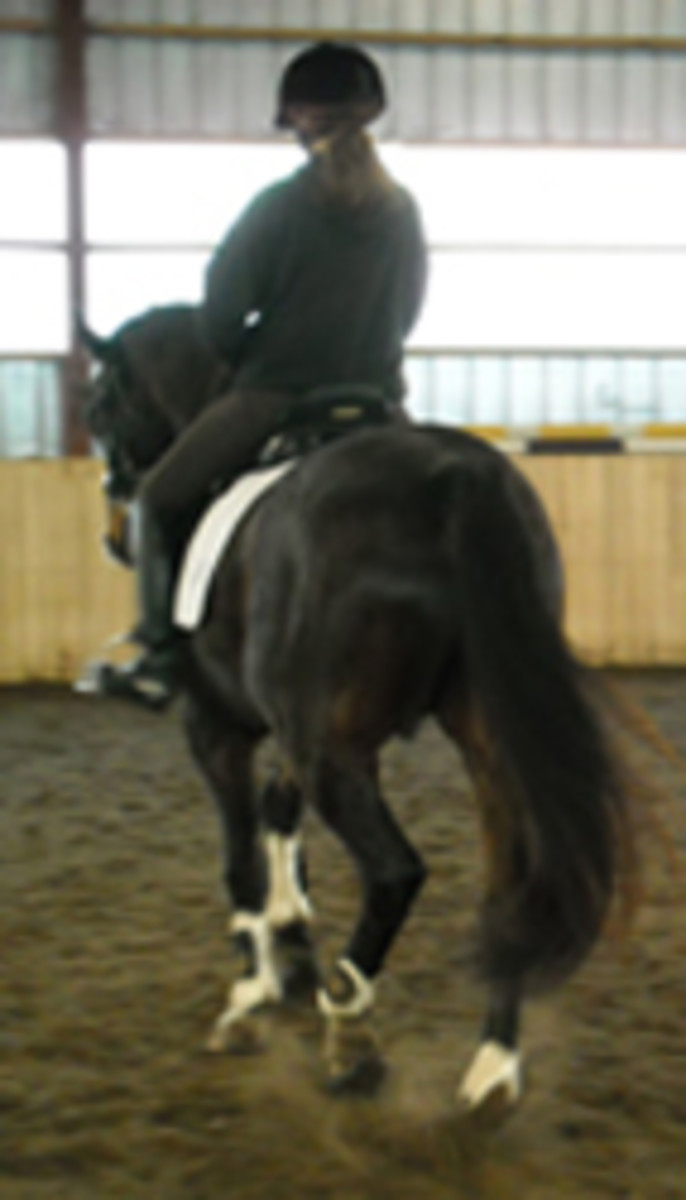

Exercises
Kerry has a very complex program of stretch, strengthen and muscle memory exercises to help her use her torso more effectively, and with more symmetry. She is riding at the FEI Junior level/PSG, and is only 15-years-old. I find it quite common for young riders in this age group to lack sophistication in use of their core, simply because of their physical and mental stage of development. It is hard for the rider to catch on to where their coach may be going with some instructions, because the rider does not have the muscle memory or endurance for correct firing patterns throughout a ride. Without a solid and functional core, they are just a little disconnected between their hips, legs and shoulders. One of the great things about working with these dedicated young riders is that they are very serious about doing everything they can to help their riding, and quite diligent in their exercise programs with very fast results.
Working with Kerry also led to her consulting a chiropractor that uncovered some mechanical sources of her axial rotation in her structure. With a combination of mechanical adjustment and fascial tissue release, Kerry’s stretch and strength program will help her body maintain the correct alignment on a day-to-day basis and in motion while riding. If she had adjustment and release therapy without additional strength, her body would tend to use it’s old firing patterns to keep reverting back to her old axial rotation, and undoing the adjustment.
Some of the exercises in Kerry’s program are designed to create stability in her hips and torso, while improving her ability for voluntary rotation. In the pictures her rotational moves are made from starting plank positions. She starts a straight plank in photo 3 (heels, hips, shoulders aligned, stomach muscled pulled up, tailbone tucked down), and then rotates her hips only in photo 4, lifting one leg off the floor while maintaining her heel, hip and shoulder alignment as closely as possible.
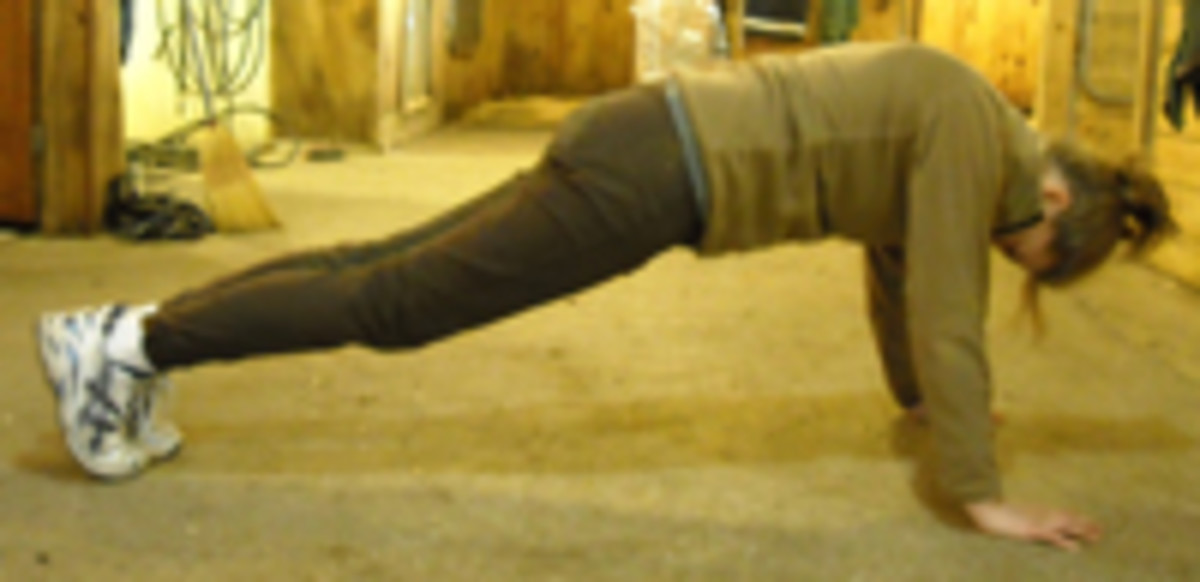


In the second exercise in photo 5, she starts in a side plank position (straight line again from heels to hips to shoulders), and rotates her upper body downward. Five to 10 repetitions with isometric holds of about 3 seconds at each phase are a good start. Going slowly and maintaining alignment is important, since swinging would allow your body to cheat by using momentum instead of control.
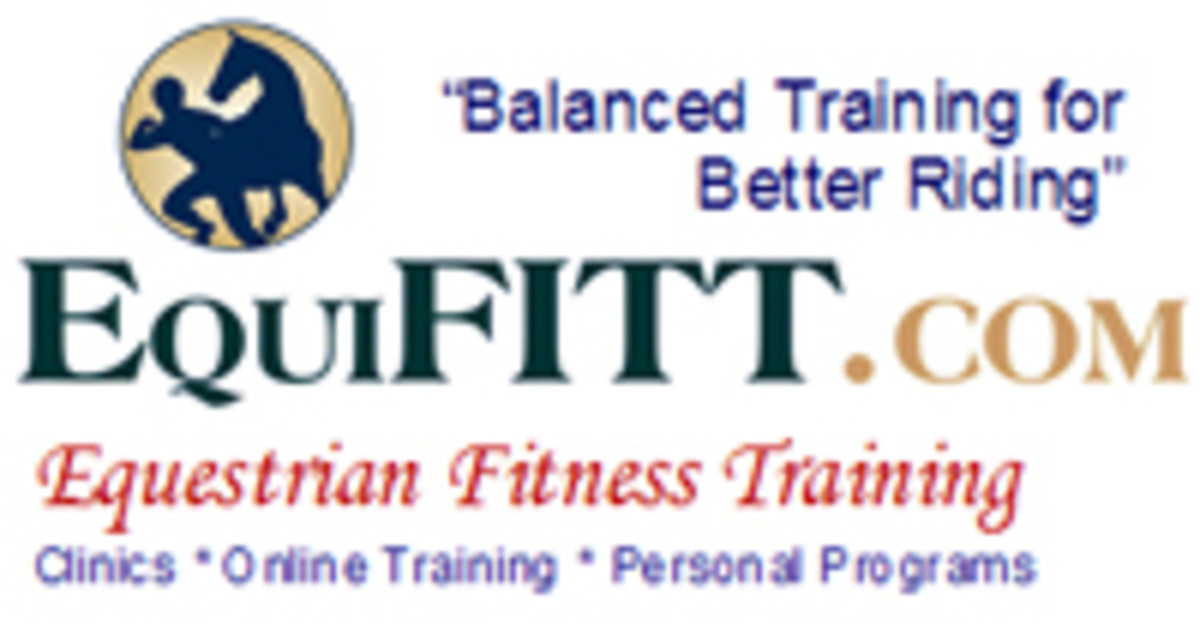
Heather Sansom is the author of rider fitness ebooks Complete Core Workout for Rider, and a regular columnist in several equestrian publications including Dressage Today. EquiFITT.com offers rider fitness clinics & workshops, Centered Riding instruction, and convenient distance eCoaching for riders anywhere. Subscribe to receive free monthly Equestrian Fittips, and download rider fitness eBooks at: www.equifitt.com/resources.html



